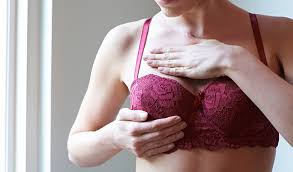Source: racgp.org.au
Australia has one of the best rates of breast cancer survival in the world.
This is attributable in part to its breast cancer screening program, which has seen a significant decrease in the disease’s mortality rates among targeted populations.
Constant updates in cancer research, meanwhile, have led to growing awareness of factors that can impact risk, such as breast density and family history.
However, breast oncology and oncoplastic surgeon, and President of Breast Surgeons of Australia and New Zealand, Associate Professor Sanjay Warrier, believes it is important to keep striving to improve even further.
‘It’s not that we’re not doing things well, but can we do things better?’ he told newsGP.
Associate Professor Warrier is particularly concerned with women who fall outside the scope of current screening programs – namely women younger than 40, two of whom are diagnosed with breast cancer in Australia every day.
‘Most Australians assume breast cancer is a problem that only older women face, but that assumption is incorrect,’ Professor Warrier said.
When considering how best to address this issue, Associate Professor Warrier decided to focus on empowering young women, ideally within the high school curriculum, to carry out their own breast examinations.
‘It’s almost like it’s been a little bit of a taboo area,’ he said. ‘But the more informed [young women] are, the more empowered, relating to how to approach things moving forward.
‘So having an idea of how to approach a breast exam at an earlier age, when they’re potentially learning about other things like sex education, makes sense.’
It was from this concept that the ‘Look, lift, feel’ campaign was born. It is a phrase Associate Professor Warrier would like to see become as well known as SunSmart’s iconic ‘Slip, slop, slap’.
‘The idea is to have a campaign relating to assessing the breasts without it being overly cumbersome, in a way that’s easy to remember,’ he said.
‘This is a process I would like to see become ingrained into the lives of women all over the world, from an early age. The earlier the detection, the better.’
Self-examination is especially important among young women for a number of reasons.
‘Breast cancer in young women can be more dangerous than breast cancer in older women,’ Associate Professor Warrier said.
‘This is because young women’s breast tissue is usually denser than the breast tissue of older women, meaning that lumps are harder to notice.
‘Mammograms can be less effective for women under the age of 40 for this reason.’
Associate Professor Warrier sees GPs as central figures to the campaign, and to the process in general.
‘It’s got to start with the GP,’ he said. ‘GPs have always been the coalface for managing women’s health, and that shouldn’t change.
‘[The campaign is about] empowering women to have an idea of how to self-examine, and encourage patients who notice changes to have a clinical assessment with a GP.’
The self-examination process delineated by ‘Look, lift, feel’, is recommended to take about five minutes and be carried out every three months.
‘It’s important to spend time just being aware of what things look like, before touching,’ Associate Professor Warrier said.
‘So the idea is to “look” and then “lift” the arms up, focusing on the breasts, the nipples, and then areola.
‘When you lift the arms, you’re looking underneath the breasts as well, lifting the breasts with your contra-lateral arm when feeling.
‘And then “feeling” systematically, which can be done through three methods. One is a circular motion around the breasts; the other method is working down the breast which we call a vertical strip method, and the third is like a radial spoke where you start from the centre and work out, around the breast.’
Associate Professor Warrier wants the campaign to encourage women to become more attuned to their bodies, and aware of changes worthy of concern.
‘One aim is to increase awareness around [breast cancer], but to reduce anxiety, as well, in that by just being more aware of your body, you’ll be aware of what’s normal,’ he said.
‘But, importantly, it’s to pick up patients that would tend to dismiss changes within the breasts, while reiterating that the majority of those are benign changes, but promoting that if they notice something that doesn’t feel right, to present to their GP.’
